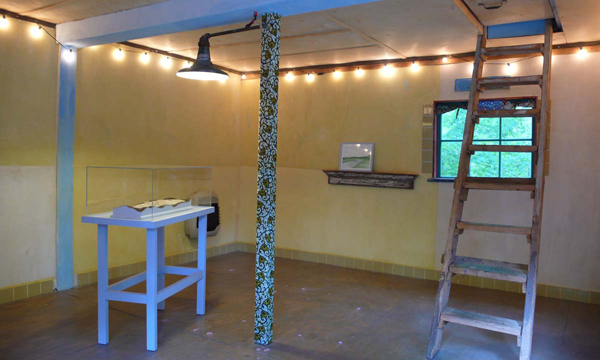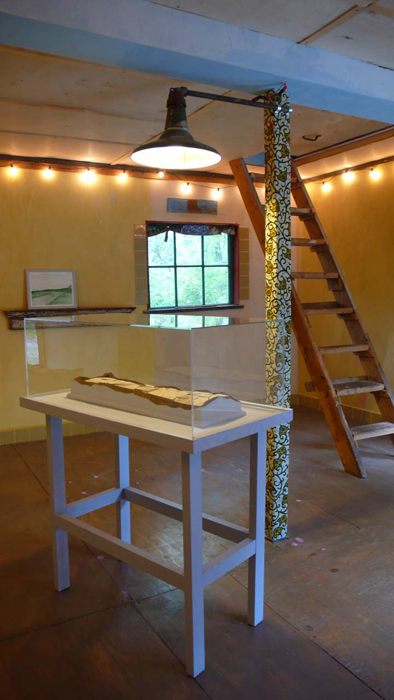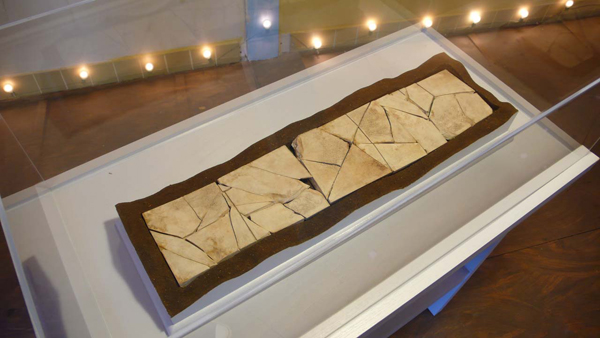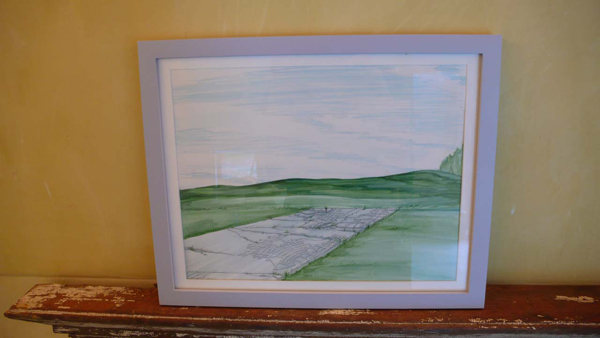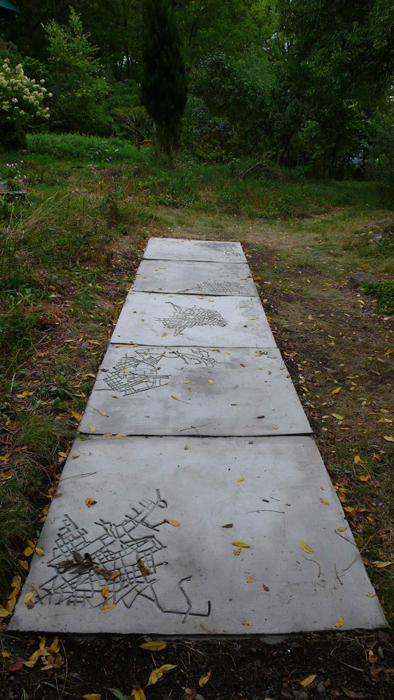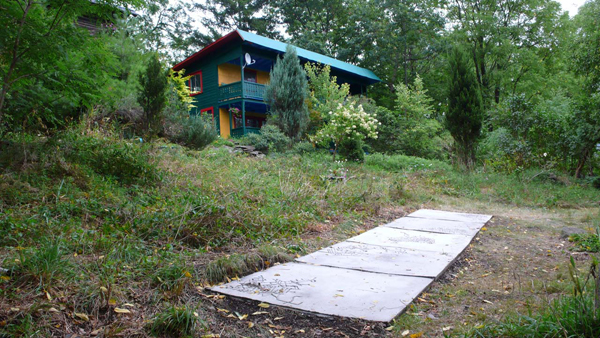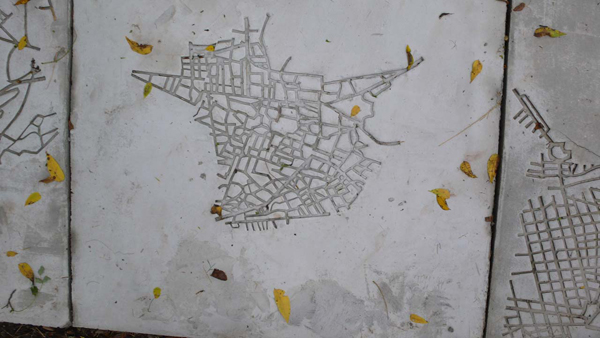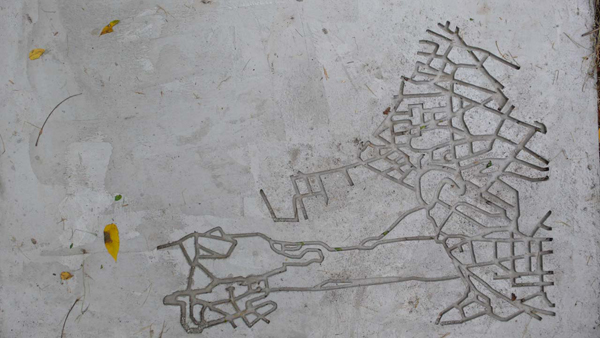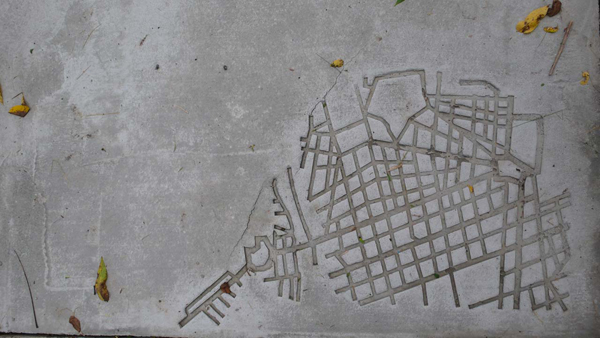You search in Rome for Rome? O Traveller! in Rome, itself there is no room for Rome, the Aventine is its own mound and tomb, only a corpse receives the worshipper.
-QUEVEDO
Since 2007, artist Robert Andrade's work has been exploring sovereignty and the material/ideological decomposition thereof through the subjects of biology, architecture, technology, and mediation. His latest work, the aptly titled ruined state(s), looks to the notion of "ruins" for crossover and contrast between universal (even minimal, muted) physical properties of contemporaneity and their conceptual counterparts of classical antiquity.
Andrade dislocates/relocates the physical and conceptual topography of Ancient Rome with a site-specific installation and earthwork by engaging the viewer with a piece purely incubated within a natural environment. Without walls or doors, the configuration of ruined state(s) permits free room for experience and observation unencumbered by the typical museum or gallery space. The artist borrows this notion of engagement from the ruins of the Roman Forum and its reified monuments to create a personal vision of decomposition’s neutral force, to invent a different platform
for the longstanding subject/object dialectic. As Frederic Jameson claims, in The Seeds of Time, "Subjectivity is an objective matter,
and it is enough to change the scenery and setting, refurnish the rooms, or destroy them[...]for a new subject, a new identity, miraculously to appear on the ruins of the old."
Five concrete segments (4ft x 4ft) impressed with fragments from a map of Rome's civic pathways and pedestrian currents are aligned in the fashion of modern sidewalk slabs. The unreinforced concrete are positioned half way into the ground and will remain exposed to time and the meteorological elements of Ithaca for approximately one year, thereby documenting the inconspicuous frailty of form, history, power, and aesthetic criteria itself. Boundaries, real and symbolic, will slowly decay, and the developing "ruins" will efface idealistic notions, creating a true state of authenticity and workmanship; the artist intends the unintentional. As the piece develops its unified narrative, the individual segments will form corresponding yet variable characteristics. In a nearby enclosure, drawings and a scaled down model of the work are also on display.
Andrade's work challenges the "end of history" and posits a history that can be conjured, reformatted, and abandoned again and again, at the artist's will, all through a concrete mass, a map, and a method of exposition in one.
Roma locuta est, causa finita est.
- Carlos Richard Lara |
